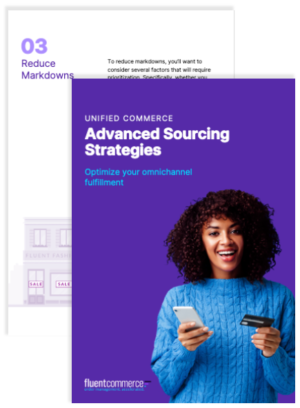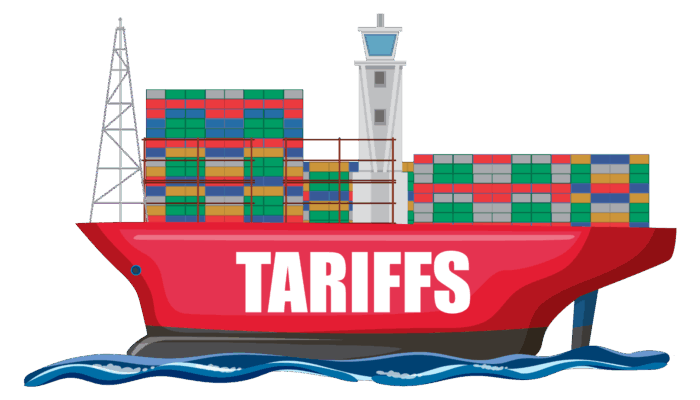For evidence that we live in the Age of the Customer, look no further than Amazon’s recent announcement that they would shorten their 2-day Prime delivery to 1-day for millions of products. What isn’t obvious to the casual observer is the sheer amount of logistics needed to support this level of customer service. If you think there’s no beating Amazon at their own game, however, you’re wrong. Smart order routing, or complex order routing as it’s also known, can put your brand on a level playing field with the e-commerce 800-lb gorilla.
Let’s start with shipping. The ability to ship from anywhere means lots of delivery options—and lots of priorities to consider. Like a calculator makes light work of number crunching, a purpose-built Order Management System (OMS) is designed to figure out the best way to deliver each order, based on your business objectives, so even though the routing is complex, you can provide a seamless order management experience to your customers.
Let’s look at how an order management system can help you with three complex use cases: Order Splitting, Optimal Routing, and Automatic Re-Routing.
Order Splitting
A customer places an order for two items. One is in stock at your Distribution Center (DC). The other is in stock only at a store or 3PL. The customer wants their items fast, so there’s no time to transfer one of the items so both can be sent as a single parcel. What do you do?
With a Distributed Order Management system (DOM) you can split the order. But what’s most important, is that the customer still sees just one order number. There’s no need to create a separate order for each item; you just split the order into two shipments. This way, it’s less confusing for the customer, provides a better order management experience, and simplifies the customer service process. The biggest benefit? You deliver on-time.
Optimal Routing
An order is received. It’s in stock at your DC, and at three stores. Which is the best place to ship from? How can you maintain the highest margin? Which shipment option best fits your brand’s delivery experience strategy? Let’s look at some scenarios.
- Store with the biggest markdowns
It’s the end of the season. Coats need to be sold to make way for shorts and t-shirts, and fast, so prices drop weekly. But you can often sell a late-season item at a higher price online than in a store. When that full-price online order comes in, where do you want to ship from? Your DC? Or the store with the biggest markdowns? - Store with the most stock
Ship from store is great, but you also want to protect the in-store experience. You don’t want to disappoint your walk-in customers if you can help it. When that online order comes in, you may want it sent to the store with the most stock on hand. - Store with the lowest throughput
Stores that are in high traffic areas move stock faster, so it makes sense to preserve their inventory. If you ship online orders from your mid-tier stores—the ones with lower stock turnover and higher markdowns—you’ll maintain a greater margin overall. - Fastest Delivery
One of the biggest benefits of ‘Ship from Store’ is the ability to reach your customer faster. An order sent from a local store may get delivered within a day or two. No expedited shipping required. That creates genuine value. It lets you provide the kind of premium delivery experience that delights customers and gets them talking about your brand to their friends. But sometimes the fastest delivery could be from a DC or 3PL. It all depends on where the customer is located. The good thing? Your order management system will figure it out for you.
And the best part of working with a purpose-built OMS? None of these scenarios is exclusive. You can mix and match. Want to ship from the store with the biggest markdowns that can also deliver within three days? No problem. Can you think of more scenarios? They’re possible. A state-of-the-art OMS gives you the flexibility to automatically route orders in the best way for your business, one that lets you maintain the biggest margin while still providing a good order management experience.
Automatic Rerouting
Sometimes an order can’t be fulfilled from a particular store or DC. Inventory is damaged, or just can’t be located. Whatever the reason, you need to shift to plan B. Luckily your OMS can help. Store staff can quickly flag any item that can’t be fulfilled. At that point, you might have a rule in place that reroutes the entire order to another store. Or you may have them complete a partial shipment, and just reroute the missing item. But there’s another scenario too.
What if the order wasn’t picked because a store was too busy? It can happen, especially during peak season or sales. But with the right OMS, you can define rules that automatically reroute an order after a certain period of time. Even if one store can’t ship it, it will be sent to another that can. That way you avoid customer disappointment and maintain a positive order management experience.
If you want to compete in the Age of the Customer, you have to put your customer first. From an e-commerce perspective, that means using the best technology to power your orders, shipping and delivery to gain loyalty and trust.
It’s what the customer expects.




